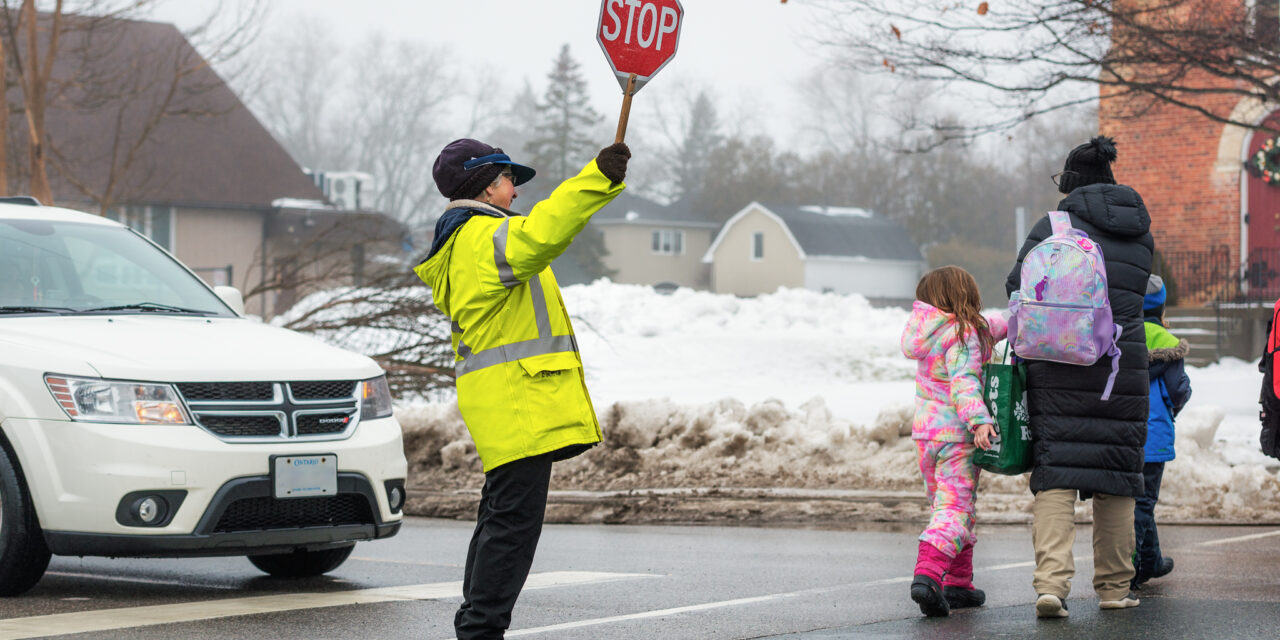- Stouffville has doubled the number of peak-period student crossings needed to justify the deployment of a school crossing guard.
- Town policy now mandates a minimum of 40 student crossings during both morning and afternoon peak periods to implement or maintain a crossing guard.
- Staff will conduct a comprehensive assessment of all 17 existing crossing guard locations this spring to ensure they meet the new requirements.
- “Should the warrant study identify locations where the warrant is not met, the elimination of the crossing guard service will result in savings in the Operating Budget,” the Staff report notes.
- New schools, like the YCDSB facility on Ninth Line, can still be assigned temporary crossing guards. However, the resulting crossing will need to undergo the same warrant assessment within two months of guard deployment to maintain service.
- Council made the unanimous decision on consent, meaning without deliberations or a vote, during their last meeting.
Municipalities are not mandated to provide school crossing guard programs. However, “Stouffville has committed to providing crossing guard service to promote active and safer travel for school-aged children to and from school,” the Staff report explains. While Ontario Traffic Council (OTC) guidelines have long suggested a 40-crossing threshold, the Town’s previous School Crossing Guard Implementation Policy halved it to 20.
While suggesting the new warrant system and noting its alignment with OTC recommendations, Staff did not offer consideration of any crossing guard locations that could be removed under the new 40-crossing threshold. Bullet Point News asked for past warrant data showing the number of assessed peak-period crossings at existing locations to determine which could be at risk, but the Town would not provide the requested information.
“Some studies have been done in the past, but not all locations were included, so we don’t have data to share at this time,” Town spokesperson Glenn Jackson told us, noting the complete study of all existing crossings coming this spring. Warrant assessments also take traffic safety, gaps in vehicular movement, and student exposure to roadway threats into account.
Stouffville’s crossing guard program has a 2024 operating budget of $236,480, covering 17 crossing guards. In a statement regarding how that budget is deployed, Bullet Point News learned that the operating budget covers the compensation of all crossing guards for their work during peak morning and afternoon periods, as well as lunchtime service.
The Town has also faced challenges filling every crossing guard post. The hours are minimal and at relatively odd times of day compared to traditional employment. If unable to recruit municipal employees as crossing guards, Stouffville will contract out the positions to an external agency.
Bullet Point News requested information from the Town regarding current cost differences between part-time Stouffville employees and contracted guards, as well as the current number of contracted guards on duty; however, no data was provided. “The Town prides itself on providing competitive wages to its employees,” Jackson stated. “The cost difference would be assessed based on the level of service the contracts can provide, which is to be determined. We don’t have further information we can share regarding employee information.”
A 2017 Staff Report shows the Town incurring nearly twice the hourly costs for contracted workers over municipal employees. According to the same report, Staff expected that, over time, the majority of crossing guard positions would need to be filled by a staffing agency. Should crossings be removed for September 2024, it would ease hiring difficulties and reliance on external staffing services.
While the new warrant system is now in effect, Council can still choose to implement a temporary or permanent crossing guard even if requirements are not met. In 2015, Stouffville considered the elimination of lunchtime crossing guards, which would have offered over $40,000 in savings. While Staff recommended the cuts based on the low number of recorded lunch-hour crossings, Council decided to maintain the service. “The children shouldn’t be put in the middle of this,” then-Mayor Justin Altmann said of the recommendation, highlighting the need to prioritize student safety.





